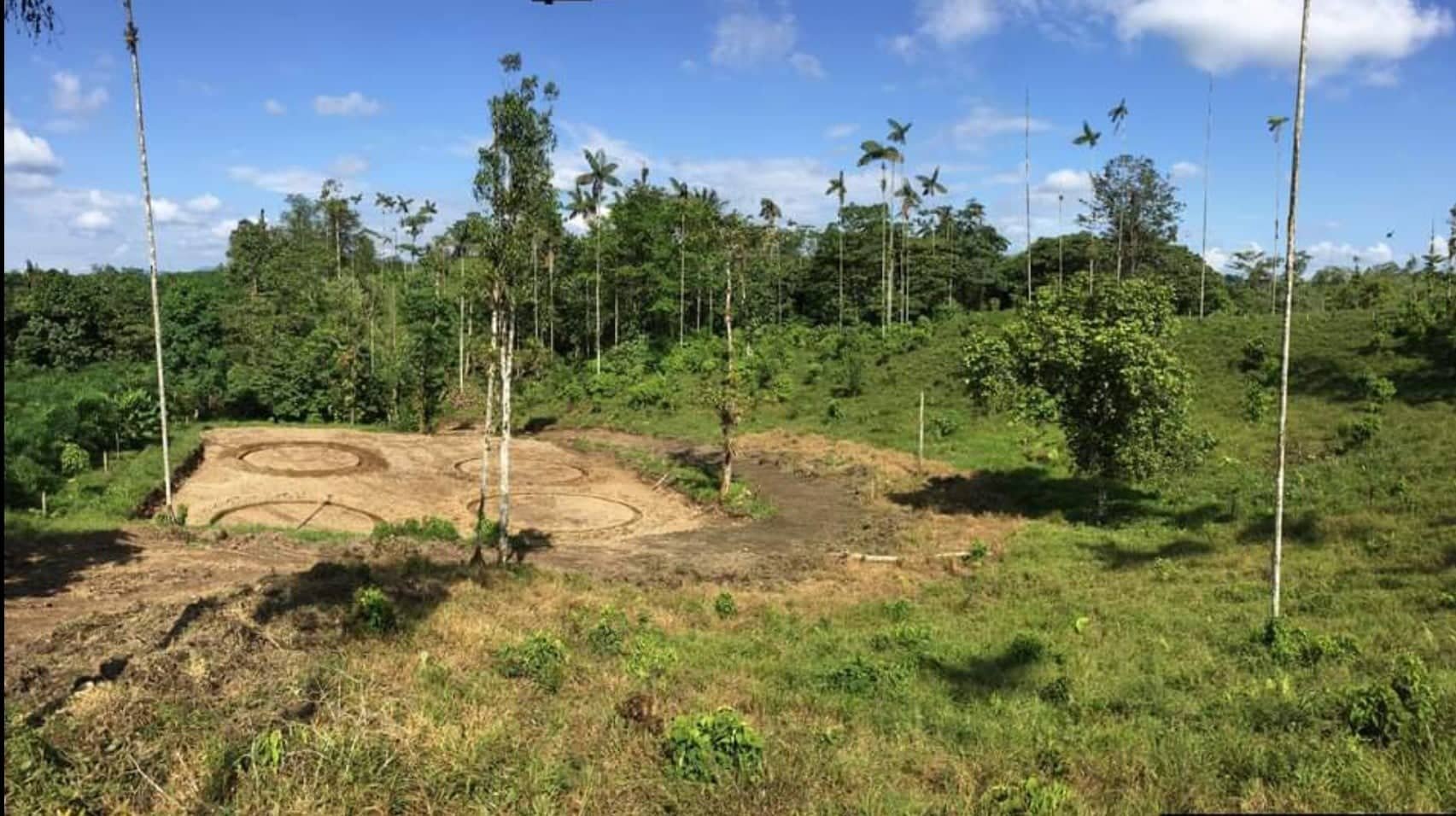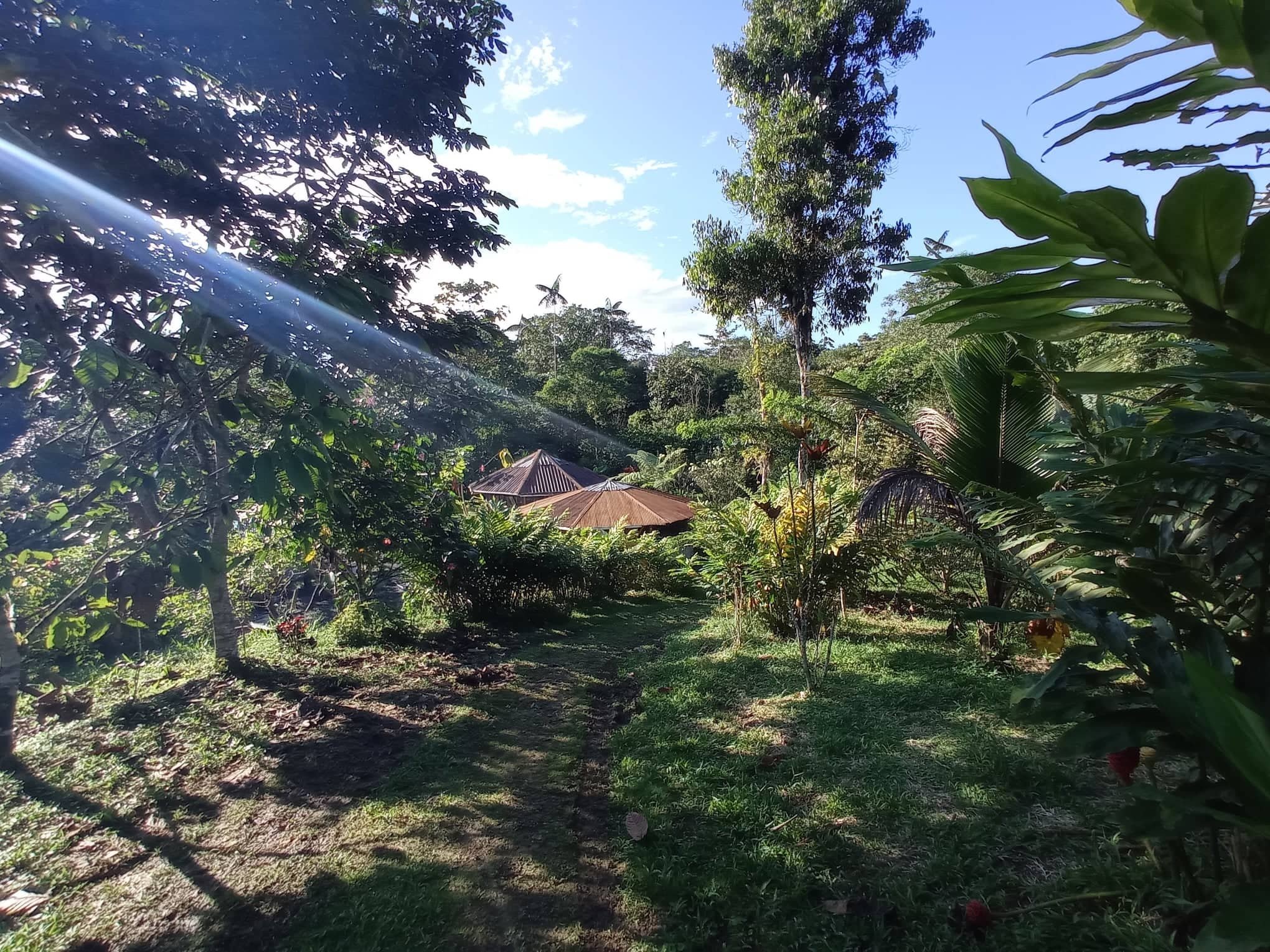A Very Big Step Forward.
What is proved now was only once imagined. --William Blake
If you follow our forest regeneration and off-grid living project in Ecuador, you know that in spite of – or because of – myriad mishaps and adventures, we’ve made some pretty substantial progress since we first pitched our tent on a muddy patch of remote land back in 2016. Since that fateful day, we have sown and nurtured thousands of trees and plants that now nourish us along with all the returning wildlife, from the magnificent eagles to the millions of microscopic critters in every handful of soil.
2016 to Today. Hot pastures transformed into a cool green oasis of fruiting trees, colorful plants. and simple bamboo houses makes a home for people, plants, and wildlife.
The Big Announcement
For some time, I've been working quietly, just hinting on the socials that we're getting ready to take Sueño de Vida to new and bigger places. Now, after months of researching and writing, clarifying the vision, and finally testing it out to make sure no one says, Girl, that's crazy talk -- I believe it's time to make an announcement…
As of this week, we have officially put down stakes as a new 501(c)3 non-profit organization in the U.S.
As lovely as this landscape looks, the grassy field in the foreground is actually a sign of degradation. Our goal is to bring the forests back with agroforestry — productive, diverse, multi-layered orchards that mimic a native forest.
AND in order to work in partnership with our new organization, we are officially making Sueño de Vida a foundation here in Ecuador as well.
Why?
Because right now we humans desperately needs three things in order to feed more people, cool the planet, and keep our climate conditions beneficial to life:
More food
More forests
More farmers growing food in forests — globally
And this is precisely what our new organization, Forest Farmers Global, is on a mission to do.
Forest Farmers Global - Our Mission
to provide the knowledge and resources needed to regenerate degraded land
and
to improve the livelihoods of farmers in vulnerable tropical rainforests
So why on earth would we — two tenacious renegades who left the convenient amusements of the city to live in a rural wilderness — be eager to jump back in to “the system”?
Well, to be frank, we have done as much as humanly possible by ourselves out here. We have a big roof over our heads and home-grown food in our bellies. For us, it's enough. Grounded in hard-won experience, we can look outside of ourselves and our simple homestead to ask,
How can we serve the incredible place and good people around us?
How can we plant more seeds of resilience and abundance for everyone?
Our Approach
Now, we aren't trying to copy what's already being done with the big multilateral aid programs and such. With Forest Farmers Global, we envision a uniquely personal approach, grounded in the needs and aspirations of our local community. We are here, on the ground, every day. After all, as hard-working farmers ourselves, we are in the best possible position to serve as mediators, translators. In plain words, we will get the funds and markets directly to the people who have both great need and great power to make positive change — the farmers of the forest.
A Very Brief Manifesto
By nurturing nature, we are nourished in return.
We live in one of the most biodiverse and threatened places on the planet, the Choco Andino Cloudforest.
We learn more every day about how to thrive in this incredible ecosystem while actually enhancing it.
We love this place and the down to earth community, our fellow farmers and people of the land.
. . .
We are over listening to the chainsaws, watching the deforestation, extinction, and rural poverty continue.
We reject an unjust and backwards food system that makes clearing forests to plant crops necessary for survival.
We are done with seeing so many industrious amiable people being paid so little for such a crucial task — quite literally feeding, watering, and cooling a hot, dry, hungry world.
. . .
We see a world where farmers can plant trees instead of cutting them down.
We envision a landscape of lush, biodiverse, productive and regenerating forests, or agroforestry systems, replacing chemical intensive one-crop farms.
We imagine a future where farmers receive just compensation for nutritious foods they cultivate on green land that captures carbon, makes rain, stores moisture, and cools the earth.
. . .
A Note on Imagining…..
When writing out new visions and mission statements and such, it's a real exercise to come up with powerful active verbs. To believe, to enact, to envision, to create, to make, to connect.... These are all great verbs. But in reading over dozens upon dozens of such vision statements, I realized I never see the verb to imagine.
Perhaps it's because we've been conditioned to connote imagination with fantasy, unreality, some Disneyland version of reality. But I think that's an unfair and inaccurate way to think about imagination, which after all has the word "image" in it. To imagine is to create an image, a portrait, a representation in the mind's eye. From that image, that idea given a visual dimension, we can create potent and sharp realities, world-changing things.
But to make this great imagining a reality, we need to organize.
To have a team, do the paperwork, win the grants and attract the investment to fund this beautiful madness. Admittedly, we have taken on a complex and challenging task. But we come to the table prepared with an abundance of practical knowledge seasoned by hands-in-the-soil wisdom. In fact, we have been steadily building up to this moment from our humble beginning.
So what’s a little bureaucracy compared to the power of the imagination?
Why this really matters to you
Think about what you ate over the past few days. You very likely ate something grown by a farmer in Latin America: pineapple from Belize, avocados from Mexico, papaya from Costa Rica, bananas from Ecuador, coffee from Guatemala, quinoa from Bolivia — just for a few possibilities. And let’s not forget the acai bowls, coconut milk, chia pudding, vanilla sorbet, ginger beer, ¨”golden” turmeric lattes and -- my favorite -- "ceremonial grade" cacao, all courtesy of the Latin American farmer.
Latin America's farmers export more food than any other region on the globe. With the prices of food skyrocketing, you might think that these farmers might be making a pretty penny, or at least a good living. Nothing could be further from the truth. Smallholder farmers — who actually produce eighty percent of the food! — earn less than minimum wage, even those growing luxury crops like cacao. "Fair Trade" is a nice idea, but translates to very little in reality.
And it’s not just food…
Growing and harvesting the cacao is hard work. Even good yields don’t mean anywhere near a living wage for farmers.
Did you know that over 50 percent of the world's biodiversity and 30 percent of the fresh water is found in the forests of Latin America? That billions of trees in these forests also breath oxygen and create rainfall carried over vast areas? That we literally cannot live without these incredible forests to feed, water and breathe life into our planet?
Deforestation in Latin America has escalated to unheard-of levels in just the past three years. And what is behind this destruction? Agriculture is the main driver, yes, but it’s not just about the foods we eat. We also need to change (or operate outside) a broken economic system that calls the sources of our very nourishment “commodities,” a system that pays billions of dollars to middlemen and the C suite and pennies to the people at the source.
But for the majority of struggling smallholder farmers, there is an understandable hesitancy to rock a boat that is (just barely) afloat. Conditioned by generations of exclusion from overseas markets, farmers are resigned to accept that things are what they are. Yet all of the farmers we speak to are without exception energetic, generous, and proud of the lives they have made on the land. These farmers need and deserve realistic and actionable paths to security and well-being for themselves, hand-in-hand with restoring critical ecosystems.
Solutions Exist
There are solutions to this doomsday scenario, solutions that can restore ecosystems crucial to climate stability, recover the soil and water cycle heath needed to grow food, and put farmers on the road to economic security and well-being. Even better, solutions already exist in the traditional ecological knowledge and farming methods indigenous to Latin America. One powerful solution we practice and promote is Regenerative Agriculture.
What’s Regenerative Agriculture?
As opposed to "sustainable," which defines a system that merely remains constant over a period of time, "regenerative" refers to any continuously renewing system. Regenerative Agriculture is a broad term encompassing farming systems that build soil fertility, store carbon, conserve water, and increase diversity and nutrient density of food.
About a dozen edible species grow in this compact space, including banana, cacao, breadnut, peppers, papaya, taro, ginger and turmeric.
The agroforestry we practice is one type of regenerative agriculture.
Regenerative Agriculture is a modern concept with deep roots in the traditional practices of indigenous and peasant farmers around the world. From the milpas of Central Mexico to the chakra forest orchards of Ecuador to the terra preta soils of Brazil, Latin America is a fertile garden of regenerative farming practices.
Agroforestry is more productive and profitable than conventional farming because plants and trees grow densely on many levels without expensive inputs. Unlike conventional farms that only produce one crop like sugar or palm oil, agroforestry provides both a variety of nutritious food for the farmer and local community, plus high value crops for sale.
But colonialism in many forms has eroded this knowledge base, and the agrochemical companies have been relentless in their pursuit of a captive market. In our mission to empower farmers with the means to reclaim their regenerative farming practices, we do so with the humility that this is not new, but a return to traditional ways that put health and sustained abundance over speculation and greed.
Building bonds of trust with people so long and thoroughly marginalized will not be easy. And from my years living in a rural Latin American community, I’ve come to believe that lofty visions, policy influencers, or the latest blockchain technology are meaningless to farmers without connection, empathy, and shared goals.
A Heart-Mind Shift for a Better World
For a truly regenerative shift on the ground, we need to shift our minds and hearts -- and by we I mean the people of the global north -- in how we think and feel about our southern neighbors we so dearly depend upon. If we really expect to keep eating and breathing from the Latin American “breadbasket and lungs” of the world, we should stop treating its stewards as mere producers of our sustenance and pleasure. We must embrace these invaluable people as our equal partners in the great task to regenerate our shared home.
I couldn't even entertain the notion of taking this huge step without the generous contributions of our donors and Patreons. Please don't think we are going “big time" and no longer need your support! In fact, now with the legal costs and time and energy we are devoting to this cause, we need your help more than ever.
Your support also helps me to pay our local employees a truly fair wage, keep our digital platform online, and keep regenerating more forests. There is a detailed description of everything we do on our Patreon page, please go on over and sign up if you can.
Thank you.






